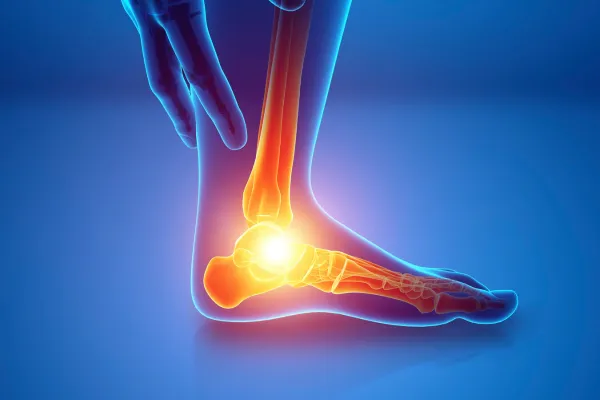Tips & Advice From Foot & Ankle Associates of Southern NH

Charcot Foot: A Complication of Diabetes That Needs Fast Action
If you’re living with diabetes, you probably know it can affect your feet. But there’s one complication most people haven’t heard of—and catching it early makes all the difference.
It’s called Charcot foot.
And while it might sound unfamiliar, it’s something we take very seriously in podiatry—because when it goes untreated, it can lead to major changes in how your foot looks, feels, and functions.
Let’s walk through what it is, how to spot it early, and why fast action matters.
What Is Charcot Foot, Anyway?
Charcot foot (pronounced “shar-ko”) is a condition that causes the bones in your foot to weaken and break down. It usually happens in people with diabetic neuropathy—nerve damage that makes it harder to feel pain, temperature, or injury.
Without those pain signals, a person can keep walking on a foot that’s already injured… and not even realize it.
Over time, this leads to:
Bone fractures
Dislocation of joints
Collapse of the foot’s arch
A “rocker-bottom” foot shape
It might sound dramatic, but here’s the good news: if caught early, Charcot foot can be treated. You can avoid long-term damage, surgery, or even amputation. The key is not waiting too long.
Early Signs to Watch For
Charcot foot usually starts out looking like a mild injury—nothing that seems too concerning. But trust your instincts. If something feels off, especially in a foot with neuropathy, don’t ignore it.
Here’s what to look for:
Redness or warmth in one foot (but not the other)
Swelling that doesn’t go away
Foot feels warmer than usual to the touch
You’re having trouble fitting into your shoes
A sudden change in the shape or arch of your foot
Sometimes there’s no pain at all. That’s why it’s so important to check your feet daily if you have diabetes.
Why Fast Action Matters
If we catch Charcot foot in its early stages, we can often stop the damage before it gets serious. Treatment usually involves:
Taking pressure off the foot using a special boot or cast
Resting the foot completely so the bones can heal
Monitoring with X-rays or imaging to track progress
Waiting too long can lead to permanent deformity, trouble walking, chronic wounds, or even infection and amputation. No one wants that—and it’s often avoidable with timely care.
What to Do If You’re Worried
If something doesn’t feel right—even if it seems minor—give us a call. Especially if you have diabetes and you’re noticing swelling, heat, or shape changes in your foot.
At Foot & Ankle Associates of Southern NH, we’ll take a close look, order imaging if needed, and guide you through next steps to protect your foot health. You won’t be rushed or brushed off. We’ll listen, explain, and create a plan together.
Your Feet Matter—Let’s Keep Them Strong
Charcot foot is serious, but you’re not alone.
With the right care at the right time, we can prevent damage and help you stay active, mobile, and comfortable.
Ask Foot & Ankle Associates of Southern NH And Their Team
Fill in the form to request a call from our team. One of our team members will call you for FREE and answer any questions or concerns you may have about your condition
Where To Find Foot & Ankle Associates of Southern NH

If you have any questions before scheduling an appointment or for general inquiries, please use the contact us button below. Our team will promptly reach out to assist you.
Opening Hours
Monday: 8:00am – 5:00pm
Tuesday: 8:00am – 5:00pm
Wednesday: 8:00am – 2:00pm
Thursday: 8:00am – 5:00pm
Friday: 8:00am – 2:00pm
Saturday: Closed
Sunday: Closed

